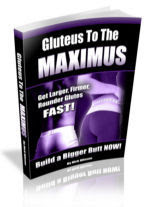Tuesday, March 30, 2010
HOW TO CHOOSE A PERSONAL TRAINER. WHY HIRE A PERSONAL TRAINER?
Personal trainers are no longer just a fad for the stars or athletes. Today they are necessary for the average person. Obesity and lack of fitness is an epidemic. Hiring a personal trainer is a step in the right direction to losing weight, toning muscles and learning about nutrition and avoiding injury. A trainer provides coaching to keep you motivated and on track. A trainer can provide an individualized safe fitness plan.
But how do you know who you are hiring and what you are getting for your money?
Credentials
Personal trainers have a variety of backgrounds not limited to but including kinesiology, physical education, physiotherapy, nursing, psychology, body building etc. However, the industry has taken off and there are personal trainers galore. The backgrounds and credentials are very variable. There are winners and losers, the same as in any other profession.
Qualifications – although there are a variety of certifications out there – the certification should be from an accredited training facility. It is beneficial if in addition to the personal trainer and conditioning certification, that the trainer has a professional degree. With a professional degree regulated by a professional body, there is a requirement to maintain professional standards, professional ethics, accountability including continuous education to upgrade knowledge as well as to perform regular self-evaluation. If bodybuilding is your area of interest – you should pursue training with an experienced qualified trainer with a background in body building.
Cost
Face to face trainers
Is it expensive to hire the most qualified trainer? You will be surprised!Costs vary from $25 to $125 per hour. Some trainers offer program package deals tailored to your needs and your budget. I would not recommend judging the quality of the trainer by who charges the highest price. Sometimes an artificially high price is set to simply to screen out poorer clients in order to milk the rich. Often at a gym you may pay $80 per hour with the trainer getting $15-$20 per hour and the gym pocketing the rest. In a quote I received from a gym the cost was $80 per hour for single sessions or $70/hr when purchasing a minimum of 50 hourly sessions with extra charges for gym membership and a personalized training program. The trainer was certified but had no professional background. I declined.
The benefits of face to face training is observation of your form, effort etc – it is much harder to fool yourself or a trainer with face to face follow up. Heart rate, muscle recruitment and breathing, as well as progress or lack of progress are good indicators of effort or lack of effort.
Online training
Online training is a much more cost effective way of training. Demonstrations of exercises can be accomplished with photos, videos, audios etc. The down side is you can see the trainer has good form in the demos but (s)he cannot observe you. I would strongly recommend face to face for the first few sessions with periodic follow up after if you feel insecure with the online method. With the online training method or purchase of E programs, just be aware that some trainers supplement the low cost by volume or by promoting E products (their own or other trainers) for commissions. They offer a cost effective product but they do have to make a living. You may be deluged with emails. Some people are annoyed by impersonal mass emails but it has to be done this way for time efficiency and to reach more clients. This is particularly true of clickbank where the authors are also affiliates to sell and promote the books of other authors for a commission. The simple solution to frequent emails is to unsubscribe if you do not wish to receive them, or delete the ones you are not interested in. If you block or unsubscribe you may miss out on interesting free articles and fitness tips though. Your call.
Don't be turned off or be suspicious of some of the bargain online prices for personal trainers. Many are very good. As noted above they supplement their income with Ebook volumes, commissions or save on advertising by using free testimonials from their clients. Don’t forget about drop-out rates too (see below) - more time for you when others drop out.
There are some amazing trainers out there in the electronic world. Again just make sure their credentials are appropriate.
Other points for online programing is that the author sends you any changes and updates. If upgrades are made you may be offered the new bonus at a great rate and you will generally be sent a lot of good fitness articles if you remain on the mailing list. Some of the Ebook authors offer private online programs as well.
Caution: some E trainers have ‘assistants’ to respond to their emails. If you are signing up for an individual training program be sure to clarify that you expect a personal response to any training questions. Their assistants should only be answering non training questions, such as technical downloading support, payment or refund questions. Clarify if there is a direct email address to reach the trainer with training questions.
Money back guarantee.
Money back would not apply to you if you simply lost interest or for some personal reason you chose to drop out. It would not be fair to ask a trainer to return all the money for a package deal. Time went in to the development of your plan. It is now yours - you own it. However you might ask up front if there is a percentage of money back perhaps early in the process if you decide that you and the trainer do not fit. You may also wish to find out about any refund agreement if the trainer fails to deliver, for example if the trainer cancels a lot or does not fulfill the promise in the quote or contract. Generally though, if you simply have made a bad choice and have not done your research you can kiss your money goodbye. However most of the problems are client related – many Gyms and trainers expect a drop-out rate. It s not a reflection of the lack of a proper trainer but most often related to the client not being ready to make the commitment and not addressing and removing their barriers such as time management, motivation etc.
Prior to embarking on fitness training.I started out with a personal trainer, then an online trainer and now I mostly train myself. You will have to measure how much your health is worth to you. It was worth quite a bit to me. I worked overtime and gave up vacations to fund my journey.
Payment - often trainers will ask for the payment up front. This is really necessary. A great deal of time goes into the development of a program and many people do not pay their bills - even if they are successful. So expect that this is standard practice. The trainer may be willing to break it into several payments if you have established a rapport and a level of trust.
Compatibility/Personality and Business Style. You will want to find a trainer who fits your personality. You don’t have to find a friend but you will be spending time with this person. You need to like them as well as feel liked and respected by them.Working it out –the trainer should be as interested about you achieving your goals as you are. You and the trainer should be up front about goals and objectives. The trainer should counsel you if your goals are unreasonable and unrealistic. You should have a frank discussion about cost – the quote should be detailed and in writing. The program should be in writing. Both you and your trainer should clearly lay out expectations.
Variety/Individuality – the trainer should provide a personalized program based on your assessment and goals – beware of a cookie cutter - one program fits all. For E programs, there is usually one program but various levels of difficulty and clear instructions on how to determine where you should start and how you should progress. If the plan goes beyond 6 weeks or so (for beginners) or beyond 3-4 weeks (for advanced), or if you reach a plateau, the trainer should have provided a review, and program change in the plan.
Style - Do you want a trainer who pushes you boot camp style or someone who provides leadership but lets you decide how much follow up and coaching you require? Both are fine depending on what works for you.
Trainer Preferences - Some trainers prefer to train only fat loss clients, only women, only men, or only athletes or seniors. If your trainer seems bored silly – don’t take it personally - find a trainer more compatible and interested in your needs.
Male or female - in my opinion, it does not matter it is more important that the trainer seems truly interested in your goals and you are compatible. You may wish to discuss this with your significant other to make sure there are no issues with your gender choice.
Young or older – again – it does not matter – you are checking the credentials – that is the main point. In defense of younger qualified trainers – you may catch them when they are fresh and eager and want to please and give you the best service – and before they have family responsibilities to interfere - not to say a more experienced trainer won’t be as equally attentive – I am just advising you not to discount a younger inexperienced trainer.
Appearance-hopefully you won't choose the best looking trainer – go by compatibility and credentials. But what you do want to see in appearance is that the trainer keeps fit. It would be hard to have confidence in their training principles if it is not working for them. I was once sent to a dietician by my family doctor to find that the woman was over 300 lb. I did not feel confident taking nutrition and weight loss advice from a very obese individual.
Interview the trainer either by phone or in person for face to face training. Ask a lot of questions. See if they offer free consultations. Make sure they take a full health history prior to training you and that they have the ability, time and desire to adapt the program to avoid aggravation of any trouble areas. The trainer should be adaptable and be able to provide a program for use in the venue you choose whether it is a gym, at home with minimal equipment or partial equipment or on the road.
Interview E books. You should be able to have any questions cleared up by email. Generally there is a contact email. Usually there is a charge for telephone discussions/consultations. With most E programs there is email follow up for a specific period after purchase - so that should be incentive to get started right away.
References – don’t rely on impersonal testimonials with generic information and non identifying sources. Anyone can make up that sort of information. Ask the trainer for written references from former clients if possible or other information that can be validated or verified.
Coming soon – warning signs you have hired the wrong personal trainer.....more about testimonials (risks and pitfalls), ownership of photographs etc.
Wednesday, March 17, 2010
GLUTE AMNESIA...GIVES NEW MEANING TO: "YOU LAZY BUM!"
Glutes are part of the posterior chain (linkage of muscles in the rear of your body) which play a role in posture, strength, performance, and injury prevention of the back and knees as well as giving a nice aesthetic appearance such as that sported by J-Lo or Tosca Reno.
The glute is supposed to be the largest and strongest muscle in the body.
The glutes are made up of the gluteus maxumus, gluteus medius and gluteus minimus. The primary function (gluteus maximus) is hip extension - moving the thigh to the rear, that is extending the hip that is pushing you forward while your foot is on the ground; the primary function of the gluteus medius is leg abduction, that is moving it away from the centerline of the body. The mimimus like its name is not hugely significant. Functionally the glutes help push you up and out of a chair, get up from a squat.
When I started my fitness journey and shed my baggy clothes, I noticed ‘Yikes. No butt!
How fair is that. I was still obese but had a flat derriere. Why? Well I believe the same things that caused the obesity such as a sedentary job an inactive lifestyle, and habits that included a lot of time saving energy sparing actions contributed to muscle loss there and elsewhere.
I started to look about and noticed there was an epidemic of missing buns in the general population.
Though I was working out not much was going on there. Flat. Along with the aesthetic downside there is a health downside - injury.
There are controversial theories about glute amnesia. Some therapists feel that lack of use of this muscle leads to problems getting the muscle to fire etc. (sort of a neuro - brain/muscle response problem). Whatever. At the very least it is grossly underused muscle which leads to muscle wasting. In my opinion it is fueled by our lifestyles.
We sit a lot. We avoid stairs in favour of elevators and escalators. Even people who work out, often do not adequately recruit their glutes. They spend more time on upper body, or use machines that do not use adequate range of motion or machines in place of barbells and free weights losing the benefit of fuller range of motion and the recruitment of accessory muscles.
My day consisted of at least 3 hours in the car (sitting of course); at least 8 hours sitting at a desk and maybe some sitting time relaxing having meals or watching Tv along with some hobbies that require sitting for the most part. Hard to undo with exercise alone. Particularly with the wrong exercises or the wrong techniques. I noticed with surprise when attending body building competitions, that some of the competitors had awesome bodies until they turned around and walked off stage. All those muscles but a flat unattractive butt.
When glutes are not activated the muscles that step up to the plate are hamstrings and lumbar extensor muscles. When the glute muscle does not carry its fair share of the load during certain movements you could have knee pain or injury, hamstring injury and anterior hip pain just for starters. Weak glutes can lead to injury when doing deadlifts.
Can you get your butt back? Or as the amnesia proponents say 'reactivate the firing of your glutes' Yes. If you are young generally the response is faster. If you are older it will take longer and may not ever be to the J-Lo level, 'butt' you certainly can improve the aeasthetics as well as the function. In fact for health reasons, it is essential.
Reviewing advice from various trainers here are some tips:
Before embarking on heavy weighted squats and deadlifts try isometric and isolation exercises to learn to recruit your glutes. Examples:
- Contract your butt muscles sitting in the traffic in the car – vary with alternating contractions then simulataneous Left and Right. Go for 100 contractions.
- Waiting in a line up? Yep do more butt contractions. Try holding as long as you can and release. Each ‘workout’ try holding for a bit longer than last time.
- While watching TV lower yourself to the chair squeezing your glutes but stop just short of the destination and squeeze as you stand straight up again. Repeat 20-25 times.
- Take the stairs two at a time – using handrail for safety
- Try to actively use the glutes when walking - concentrate
- Incorporate hills in your walks or add inclines to your treadmill.
- Don’t use a hamstring curl machine if you have dominant hams – it will make the problem worse
- Don’t use the elliptical for cardio (too little range of motion, the stride is too short and there is not enough hip extension; it is more upper body workout than lower and contributes to other issues due to the stride not being appropriate distance for everyone) – so use it with caution and perhaps consult a personal trainer re adjustments to suit you.
- When doing squats favour barbells or free weights over machines
- When doing squats be sure to go down to at least to 90 degrees (thighs parallel to floor) to recruit the glutes – the lower the more recruitment.
- When squatting make sure the knee is not over the foot or it puts more emphasis on the quad. One trainer pointed out the only time this won’t be so is if it is a very deep squat. The lower you go beyond 90 degrees the more the glutes are involved.
- When squatting or doing deadlifts concentrate on contracting the glute muscles
- Some exercises to try one-legged glute bridges, kickbacks on bench using machine, split squats, lunges, squats, deadlifts, back step lunge, bent knee bridges on ball. There are plenty of exercises to chose from - using balls, body weight, bands, barbells and free weights.
Training Techniques to Call in the Glutes
Most exercise for the glutes are also for the thighs. Many of us have stronger attachments and muscles in the thighs so the quads do most of the work and take most of the benefit if we don't purposely use techniques to recruit the glutes. Some more tips from trainers:
1. Try pre-exhaust. First, use an exercise that works ONLY the target muscle. Then, immediately follow that with an exercise that works the target muscle and several other muscles. The technique virtually exhausts the target muscle first then is followed with one that utilizes other muscles (a compound exercise) to help push that already pre-exhausted target muscle harder.
Two isolation exercises: low pulley extension - a) attach ankle pulley, face machine, extend leg behind you - repeat and perform to muscle fatigue; 2) glute push ups - lay on floor knees bent 90 o , feet flat on floor - push hips toward ceiling squeezing butt hard - can do one leg at a time - cross non working leg over other - perform to muscle fatigue
After pre-exhaust - immediately go to compound exercise such as squat
2. When doing squats visualize sitting back - leaning forward puts more emphasis on quads
3. When doing squats raise your toes in your shoes (to place more weight on heels and subsequently the glutes)
4. When doing lunge push with heels rather than balls of feet.
5. Leg Press - if you place foot with heel at top edge of foot plate and the rest of the foot off the plate - puts more emphasis on glutes
If you don't believe squeezing the butt with exercise works, try this test. Climb a good sized hill squeezing your butt hard. Trust me you will know where your glutes are the next day!
If you have tried and can’t seem to isolate and contract the glutes – see a therapist or fitness trainer professional to help you sort out the problem.
One exercise I did that seemed to really get to the spot where the thigh meets the butt was a slightly bent knee deadlift with heavy weight – wow was I sore in the correct spot.
Don't do deadlifts especially with heavy weights unless you have training on correct form and are able to recruit your glutes.
Recently I have been doing metabolic resistance training involving high rep weights using supersets of upper/lower body – there are a lot of squats, lunges, deadlifts and my butt is burning.
It is working.
I am also doing lots of butt squeezes in boring line ups or in the car or at the office. Last year I got a sit/stand work station because of a hip issue. Sitting less helps my hip and my butt.
Sore? Now is the time to use your foam roller to release muscle tension and increase flexibility and reduce the appearance of cellulite.
Note: I am not a fitness instructor. This information is from my interpretation of research I have done and my personal experience as a fitness consumer. Any mistakes are mine alone. There is plenty information out there on perfecting the butt. My top picks are Nick Nillsons Gluteus to the Maximus, Tosca Renos The Butt Book, and Oxygen magazine which has special feature editions including butt workouts.












